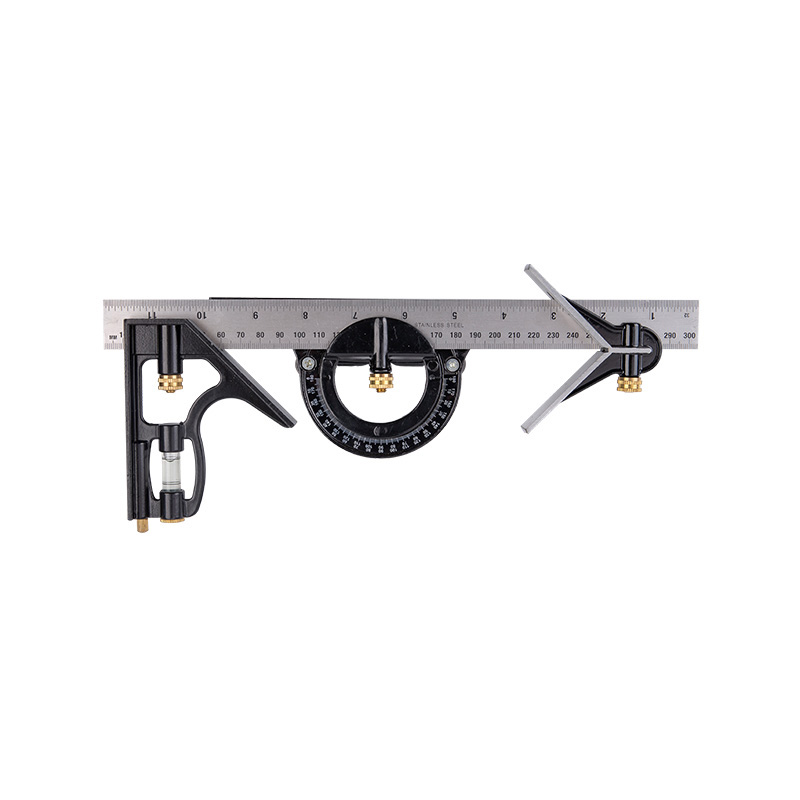Accuracy: Precision is paramount in professional settings, and combination squares excel in delivering reliable accuracy. The solid blade and square head design ensure perpendicular alignment and precise angle measurements, crucial for tasks requiring exactness. Woodworkers rely on them to ensure joints fit snugly and angles are precisely cut. Metalworkers use them to mark and verify precise measurements for drilling and cutting operations. Compared to traditional rulers or calipers, which may lack the robustness and alignment features, combination squares provide superior accuracy, contributing to higher-quality craftsmanship and more precise project outcomes.
Ease of Use: Professionals value tools that are intuitive and easy to use, especially in fast-paced environments where efficiency is key. Combination squares feature a square head that allows for quick alignment against edges and corners, ensuring measurements start from the correct reference point. Setting and locking measurements are straightforward processes, requiring minimal effort and reducing the likelihood of errors. This ease of use promotes productivity by enabling swift adjustments and accurate measurements without the need for complex setups or adjustments.
Marking Features: Many combination squares are equipped with additional marking features such as scribing points, spirit levels, and built-in rulers. These integrated tools facilitate precise marking directly from the measuring instrument, eliminating the need for separate marking tools. For instance, a carpenter can use the scribing point to mark wood for cutting or drilling, ensuring consistency and accuracy throughout the project. The inclusion of spirit levels aids in verifying horizontal and vertical alignments, crucial for ensuring structural integrity and aesthetic appeal in construction projects. By integrating these marking features, combination squares enhance efficiency, reduce downtime, and promote consistent results in professional applications.
Durability: Professionals rely on tools that can withstand the rigors of daily use in demanding environments. Combination squares are typically constructed from durable materials such as hardened steel or aluminum, chosen for their strength and resilience. This robust construction ensures longevity and reliability, even when subjected to frequent handling and exposure to harsh conditions. Unlike plastic rulers or less durable measuring instruments, combination squares maintain their accuracy and functionality over extended periods, minimizing the need for replacement and reducing operational costs. This durability makes them a cost-effective investment for professionals seeking reliable tools that deliver consistent performance in challenging work settings.
Angle Measurement: Accurately measuring and marking angles is essential in various industries, from carpentry to metal fabrication. Combination squares incorporate a protractor function, allowing professionals to measure and set precise angles with ease. This capability is invaluable for tasks such as cutting miter joints, marking angles for complex assemblies, or verifying the alignment of structural components. Unlike traditional rulers or basic calipers, which lack the ability to measure angles directly, combination squares provide comprehensive angle measurement capabilities in a single tool, enhancing efficiency and accuracy in professional applications.
Compactness: Despite their versatility, combination squares are designed to be compact and portable, making them suitable for both workshop use and fieldwork. Their ergonomic design and lightweight construction ensure ease of handling and storage, without compromising on functionality. Professionals can easily carry combination squares between job sites or workstations, facilitating seamless transitions and enhancing operational flexibility. This compactness contributes to improved efficiency by enabling professionals to perform measuring and marking tasks efficiently, regardless of the work environment or project requirements.
Heavy duty professional combination square




 English
English Español
Español
















